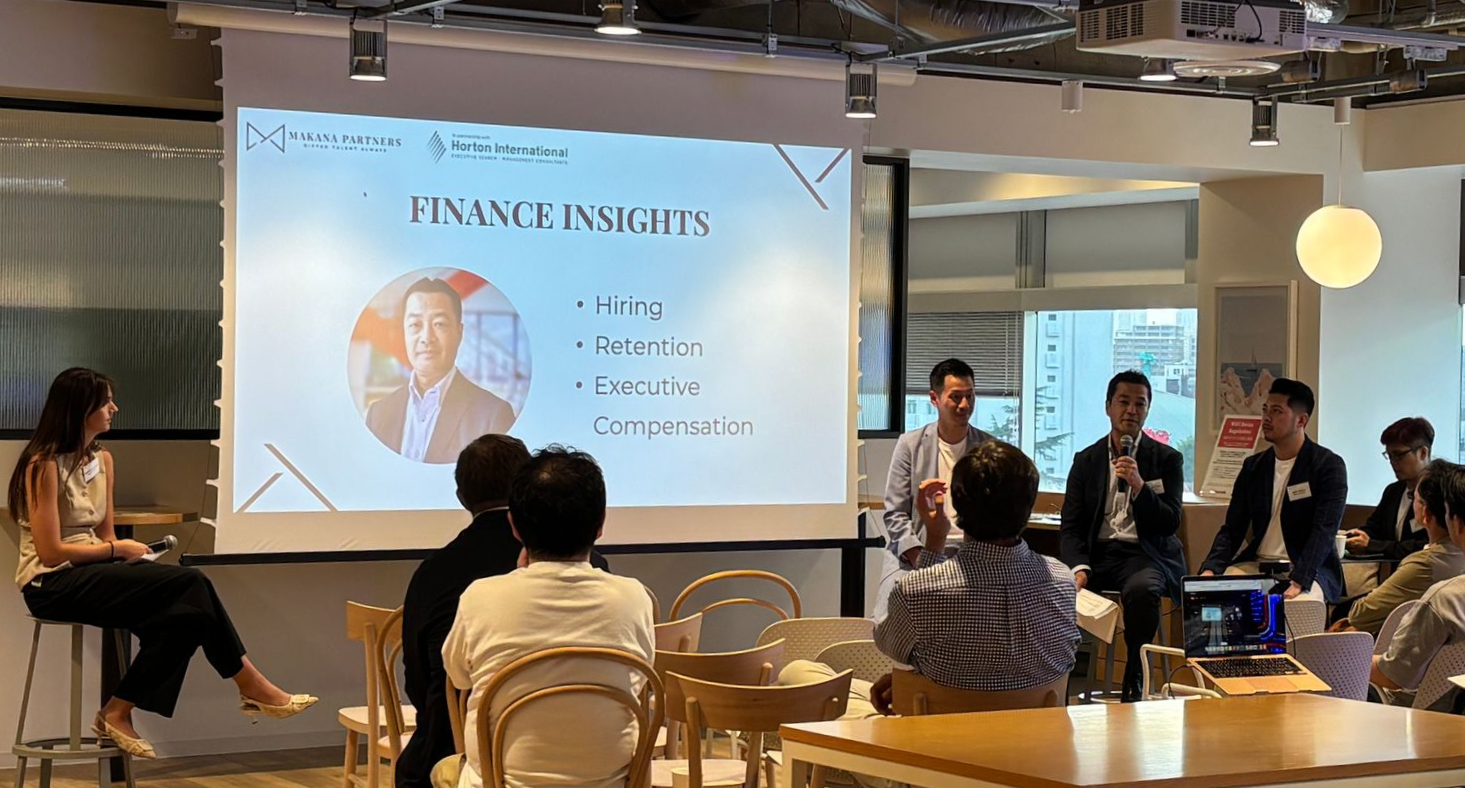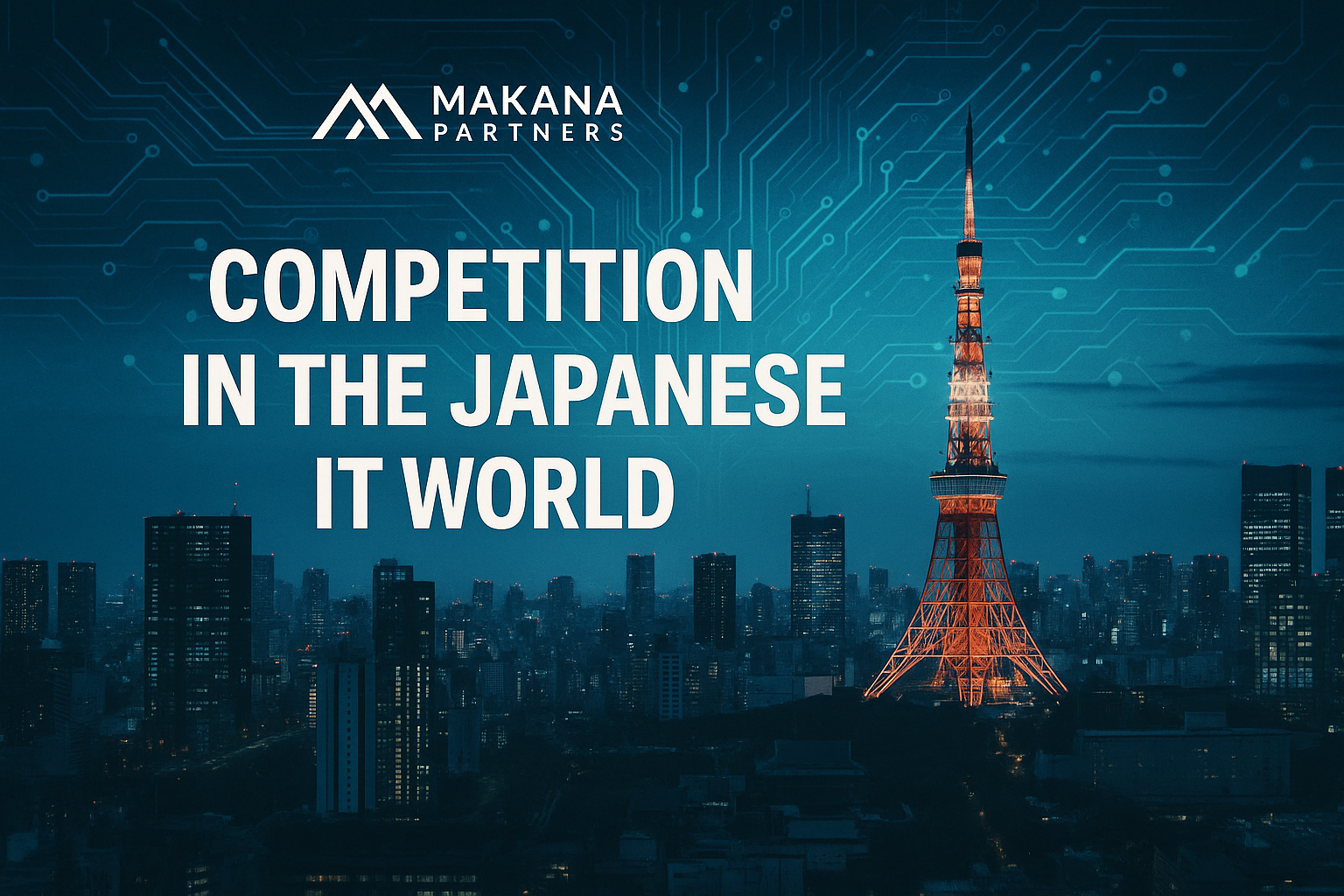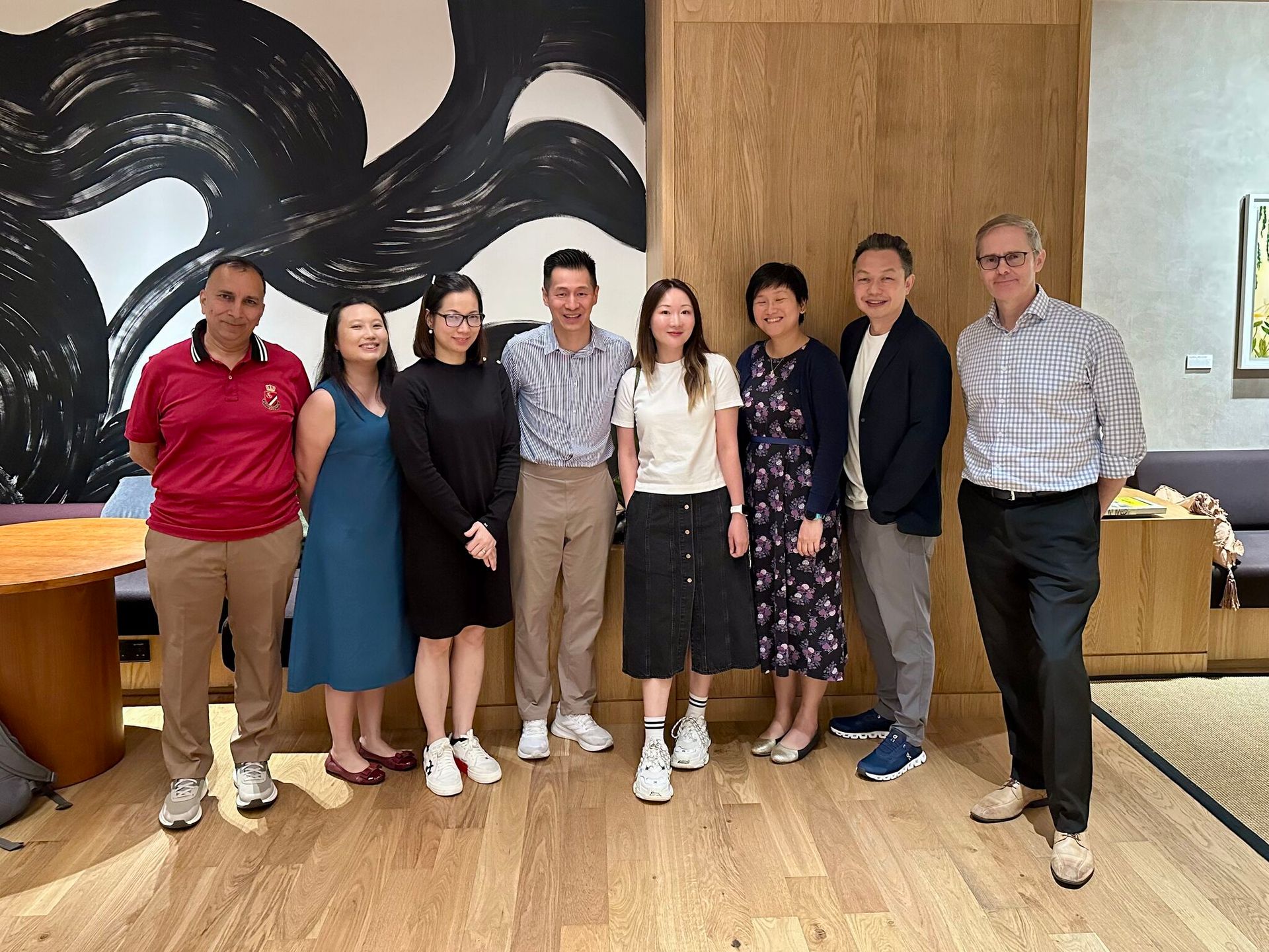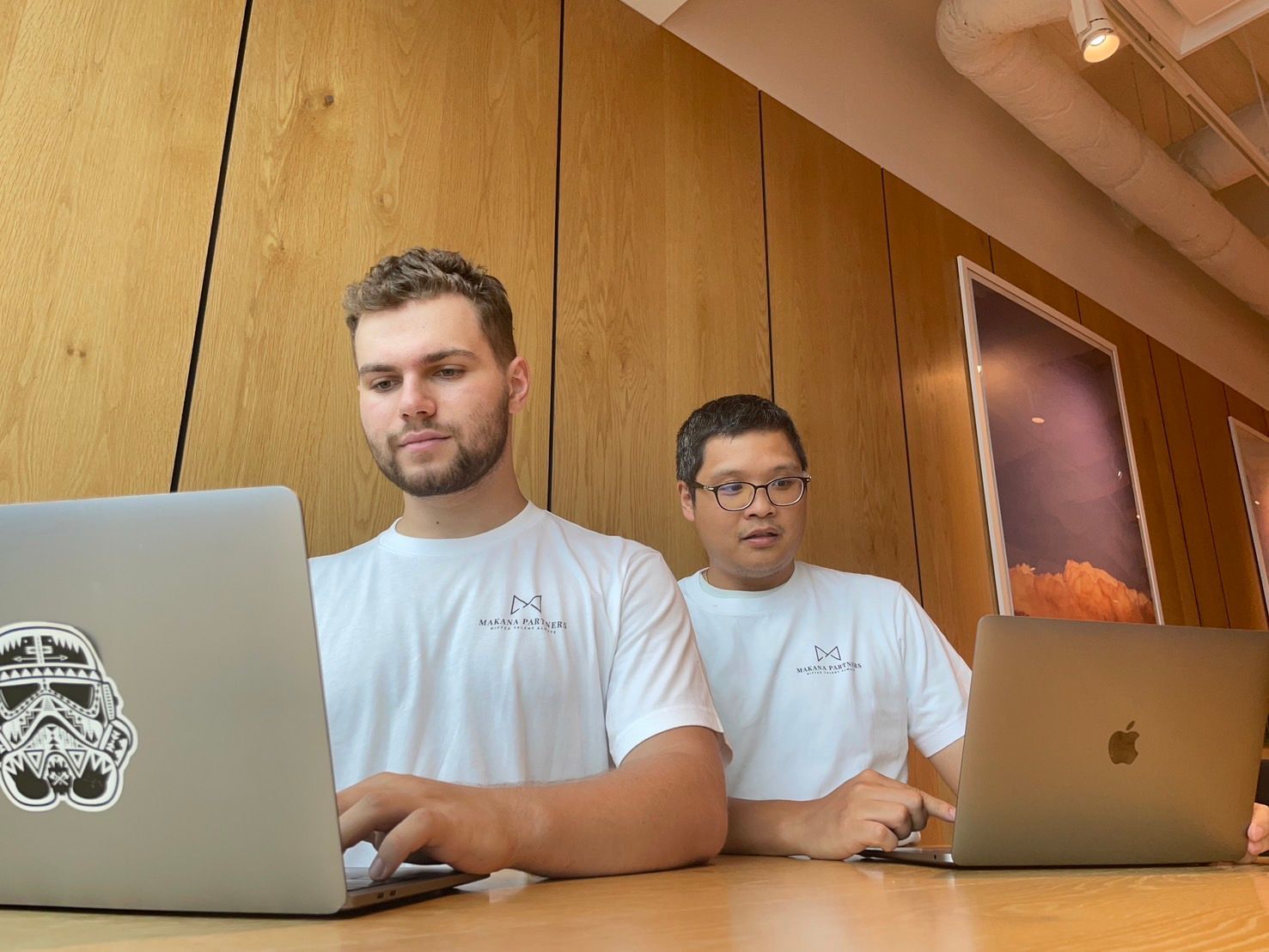By Yan Sen Lu
•
June 10, 2025
As Japan approaches the so-called “2025 Digital Cliff,” a quiet revolution is unfolding across the nation’s labor market. For decades, the country has been known for its conservative hiring practices, language-driven employment filters, and rigid corporate structures. But demographic decline, global competition, and a long-overdue digital transformation are reshaping the very DNA of how Japan works—and who gets hired. At Makana Partners, we recognize this moment not just as an economic turning point, but as a powerful opportunity to help both professionals and businesses navigate one of Japan’s most significant talent transitions in modern history. The Crisis—and Opportunity—Behind Japan’s Digital Push Japan is currently facing a shortfall of over 220,000 tech professionals , a gap that, if unaddressed, could cost the economy as much as ¥12 trillion ($78 billion) annually. The situation has become urgent. Companies across nearly every industry are undergoing large-scale digital transformations, updating legacy systems, investing in cloud infrastructure, and seeking to incorporate AI and automation into workflows. What was once optional modernization has become business survival. Yet, while the demand for digital talent has surged, the supply has not kept pace. Japan's traditional hiring pipelines—centered on young university graduates and long-term employment—simply can't meet this demand. As a result, hiring managers are rethinking what qualifies as a "tech candidate." Increasingly, they are looking beyond technical backgrounds and actively recruiting professionals from other domains who bring transferable skills, problem-solving ability, and the willingness to retrain. A Growing Pathway for Non-Tech Professionals One of the most compelling trends in Japan's evolving job market is the rise of career changers. Professionals from finance, manufacturing, education, and even hospitality are now pivoting into roles in IT, product management, cybersecurity, and data analysis. For the first time in decades, there is real permeability between industries—and it’s being supported both by government policy and private sector need. Several forces are driving this openness. Japan’s aging population continues to shrink the domestic workforce, which has loosened language and experience barriers across many industries. In fact, many companies are now willing to hire bilingual or even English-only candidates, especially in startups and multinational environments. At the same time, the pandemic normalized remote and hybrid work, further increasing the accessibility of tech careers, particularly for professionals outside of Tokyo. This democratization of opportunity also comes with attractive compensation. Entry-level tech roles in Japan often start at around ¥8 million annually , well above the national average salary of approximately ¥4.6 million. More experienced professionals in high-demand areas like AI, cloud infrastructure, or machine learning can command salaries of ¥12–15 million or more. Challenges That Still Remain Despite the growing opportunities, the path into Japan’s tech ecosystem is not without obstacles. First, the learning curve can be steep. Most roles in data science, software development, or cybersecurity require hands-on skills, technical fluency, and demonstrable project experience. Simply having business domain knowledge is not enough. Second, age remains a subtle but real barrier in certain sectors. While companies are more open to mid-career hires than ever before, professionals over 40 may find fewer entry-level training pathways unless they bring clear, high-leverage expertise. That said, these barriers are softening—especially in roles that blend industry experience with tech transformation, such as digital project managers or transformation leads. Lastly, competition is rising. As more people make the transition into tech, especially from traditional corporate roles, differentiation becomes critical. Candidates need to invest in certifications, build project portfolios, and demonstrate how their past experience maps onto digital-first roles. Strategies for Successful Transition For professionals considering a shift, the key is to start with a realistic skills audit. What are the underlying problem-solving, communication, or project management skills they bring from their current role? How do those map onto emerging needs in Japan’s digital economy? From there, targeted upskilling is essential. Areas like Python programming, data visualization, cloud infrastructure (AWS, Azure), and information security are among the most in-demand. Online programs, coding bootcamps such as Code Chrysalis , and industry-specific certifications can provide the needed foundation. But beyond technical skills, the ability to demonstrate impact—through freelance work, case studies, or open-source contributions—will often determine hiring success. Networking remains a critical component. Recent data shows that more than 75% of tech hiring in Japan happens through referrals or informal connections . Attending local tech meetups, joining Discord communities, or engaging in mentorship programs can open doors that job boards alone can’t. The Role of Makana Partners For Makana Partners, this shift represents a dual opportunity. On one side, we’re well-positioned to support professionals through career mapping, skills alignment, and role targeting in the fast-changing tech landscape. On the other, we can help clients—particularly those in industrial, manufacturing, or legacy sectors—source, assess, and retain hybrid talent: professionals who bring both industry experience and newly acquired tech skills. We also recognize the growing need for market intelligence . As Japan’s job market becomes more fluid, clients are increasingly looking for partners who can help them understand competitive compensation benchmarks, talent availability by region, and evolving candidate expectations. Makana Partners is building that data-driven capability. Finally, we see long-term value in building partnerships—with coding schools, bilingual communities, and tech recruiters—to help shape the next generation of Japan’s digital workforce. Our role isn’t just to react to the market, but to help steer it. Looking Ahead Japan’s 2025 job market is not simply evolving—it’s accelerating. The forces of technology, demography, and global competitiveness are converging to create a once-in-a-generation labor market realignment. At Makana Partners, we’re not just observing that shift—we’re helping lead it.




































